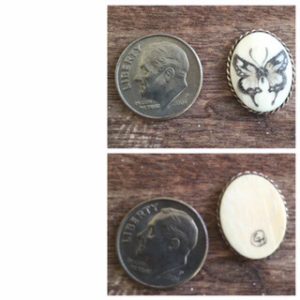We’re hoping someone may be able to identify the artist and the material on this necklace. I’ve emailed the owner hoping to get some better pictures, especially of the signature to the left. It appears to be either ivory or possibly antler, hard to tell since the base is capped. The cracks at the top make me think ivory, but the staining near the base makes me think antler. Anyone know the artist or material? We’d love to know. Post your comments below, and as always, thank you!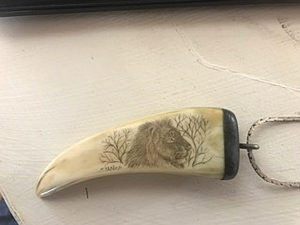
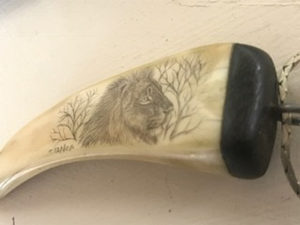

Mystery Artist #29 – A. Luiz
This is a beautiful scrimshaw that appears to be on fossilized ivory by A. Luiz. The signature matches similar signatures of Alan Luiz (see http://www.tuxcat.com/sec/scrimshaw-others.html). His full name is signed on “African Royalty” (https://s-media-cache-ak0.pinimg.com/originals/34/a3/e6/34a3e6de9146d02a4d72bf48d411bfef.jpg), and on a number of miniature nantucket baskets.
As to the questions from Keifer:
“…, I was hoping you might be able to help me identify who made it, and share a little of your knowledge on what exactly it is. In particular, I’m hoping to find out what the holes are for, what material it’s carved on, what ship is depicted, and info about the artist. Anything else you know is great too! …”
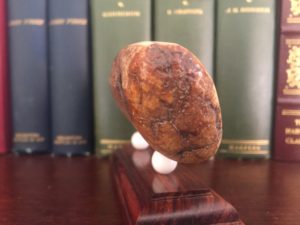
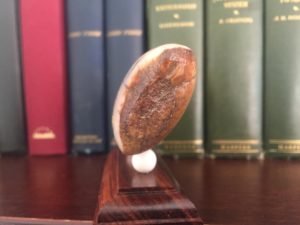
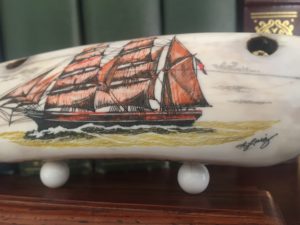
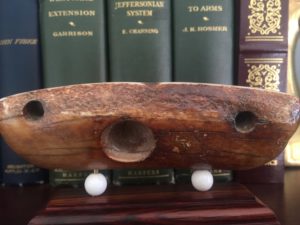
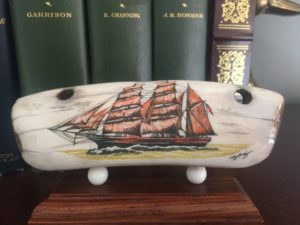
Below are pictures of the piece in question, any information would be greatly appreciated!

Mystery Artist 27 – Ring with “DCZ”
“… I have a ring I’m not sure of the material but I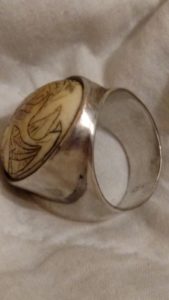
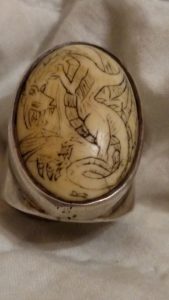
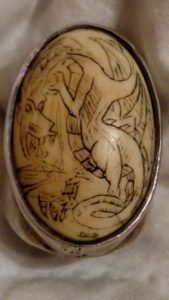 believe it to but a type of ivory.It is from what I can tell signed “DCZ”. Any information that can be determined would be greatly appreciated.Thank you -christian.”
believe it to but a type of ivory.It is from what I can tell signed “DCZ”. Any information that can be determined would be greatly appreciated.Thank you -christian.”
Looks to have a grain behind the dragon, but it’s difficult to tell. Hoping to find more information as to the location it was purchased to help find the creator. Anyone know a scrimshaw artist with the initials “DCZ”? We’d love to know, there are few scrimshaw rings out there. Add any information in the comments section below.

The Value of Scrimshaw
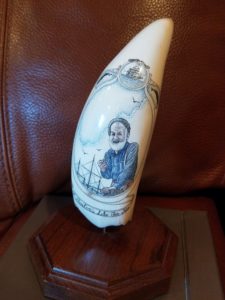
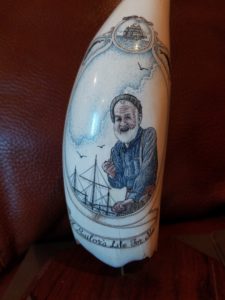 I’ve received a question regarding the value of a piece of scrimshaw done in the 20th century on a whale’s tooth, and I really don’t know the answer. I do scrimshaw, though I don’t collect it. A reader has a beautiful piece by P. Hayde, I believe, and wants to know how to figure its value so they may insure it. If there is a collector who could help them and similar collectors out with either a link or some good guidelines, I’ll be happy to post the information here, with or without your email as you see fit. It would be greatly appreciated.
I’ve received a question regarding the value of a piece of scrimshaw done in the 20th century on a whale’s tooth, and I really don’t know the answer. I do scrimshaw, though I don’t collect it. A reader has a beautiful piece by P. Hayde, I believe, and wants to know how to figure its value so they may insure it. If there is a collector who could help them and similar collectors out with either a link or some good guidelines, I’ll be happy to post the information here, with or without your email as you see fit. It would be greatly appreciated.
Leave a reply in the box below to help your fellow collectors.
Thank you in advance,
Andrew Perkins
